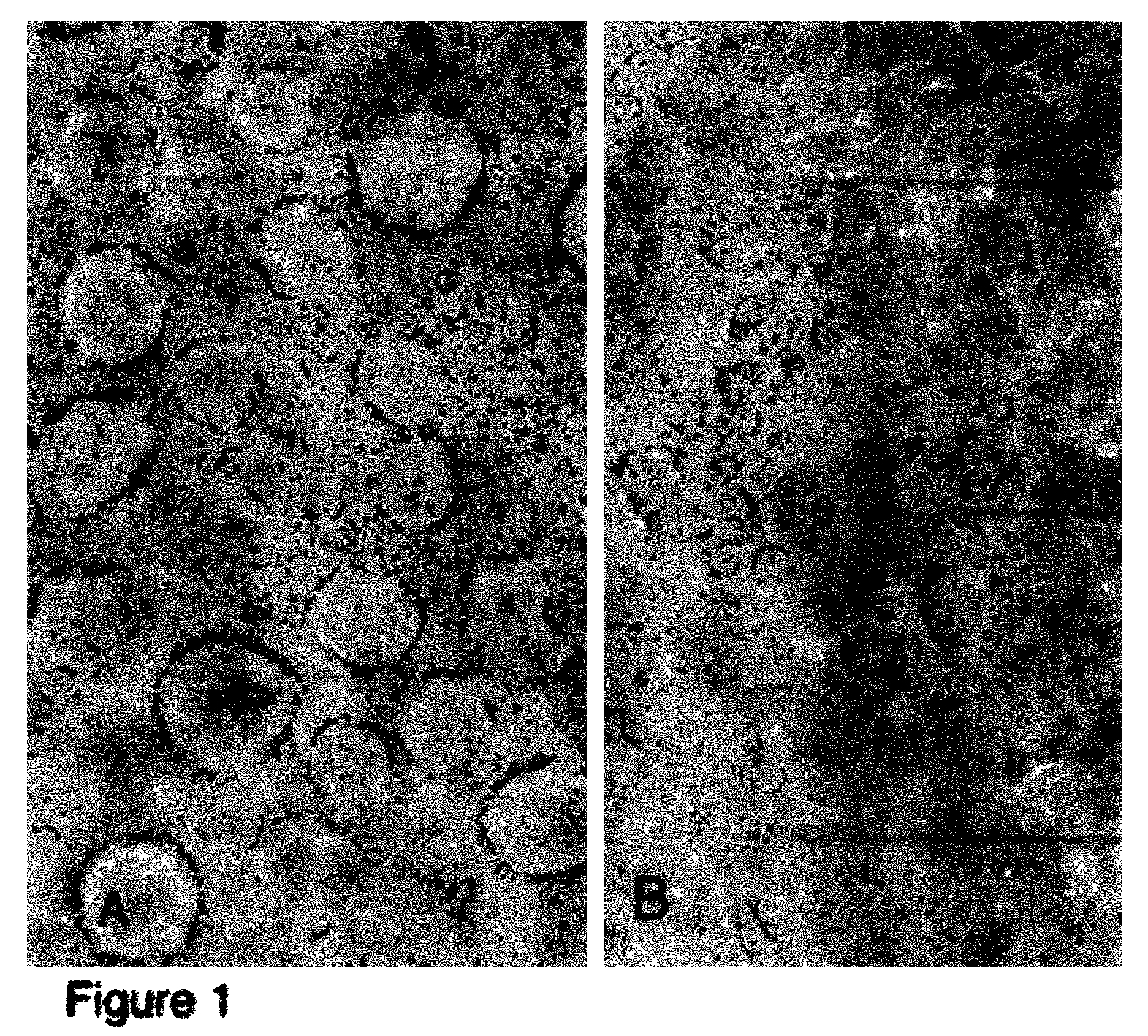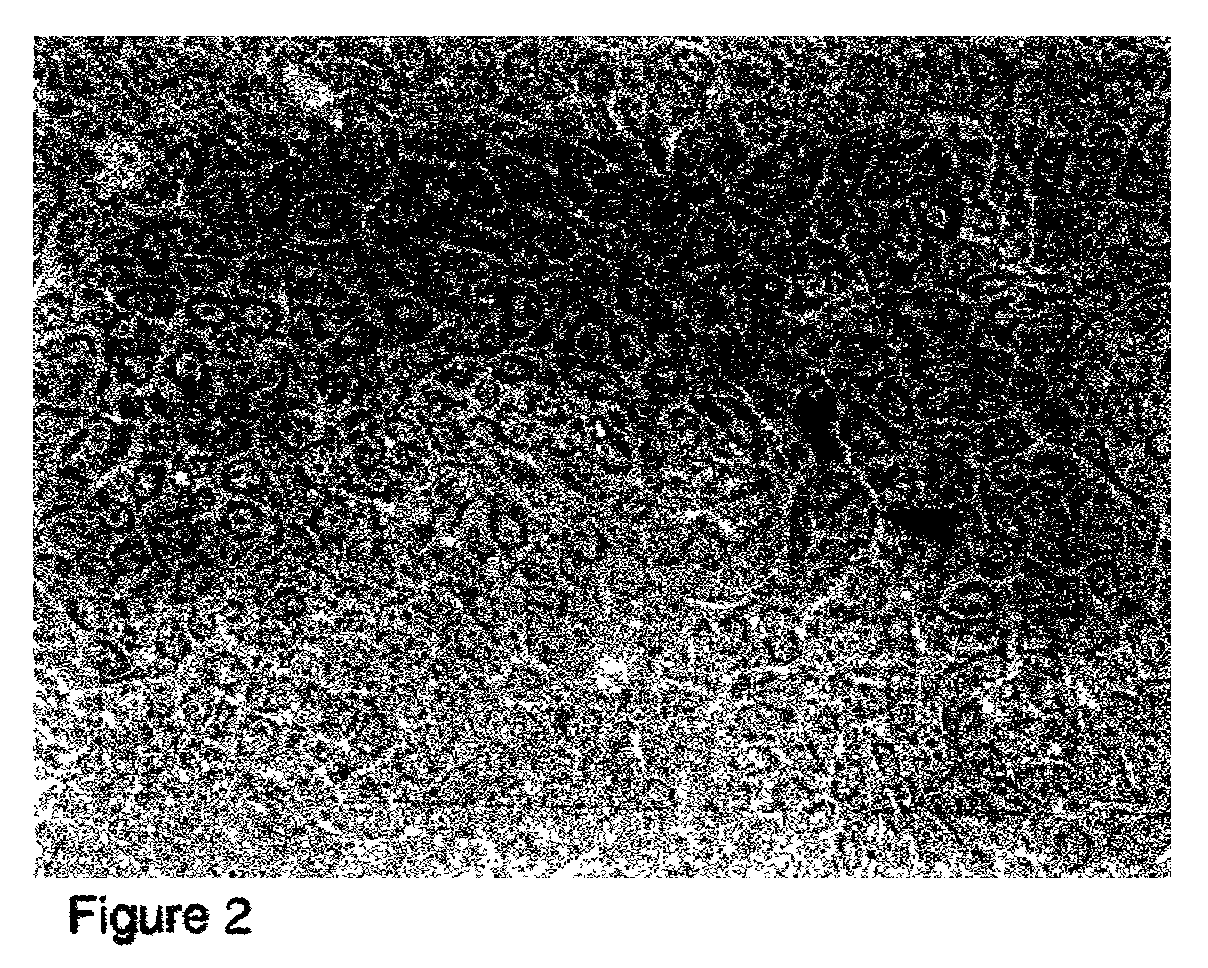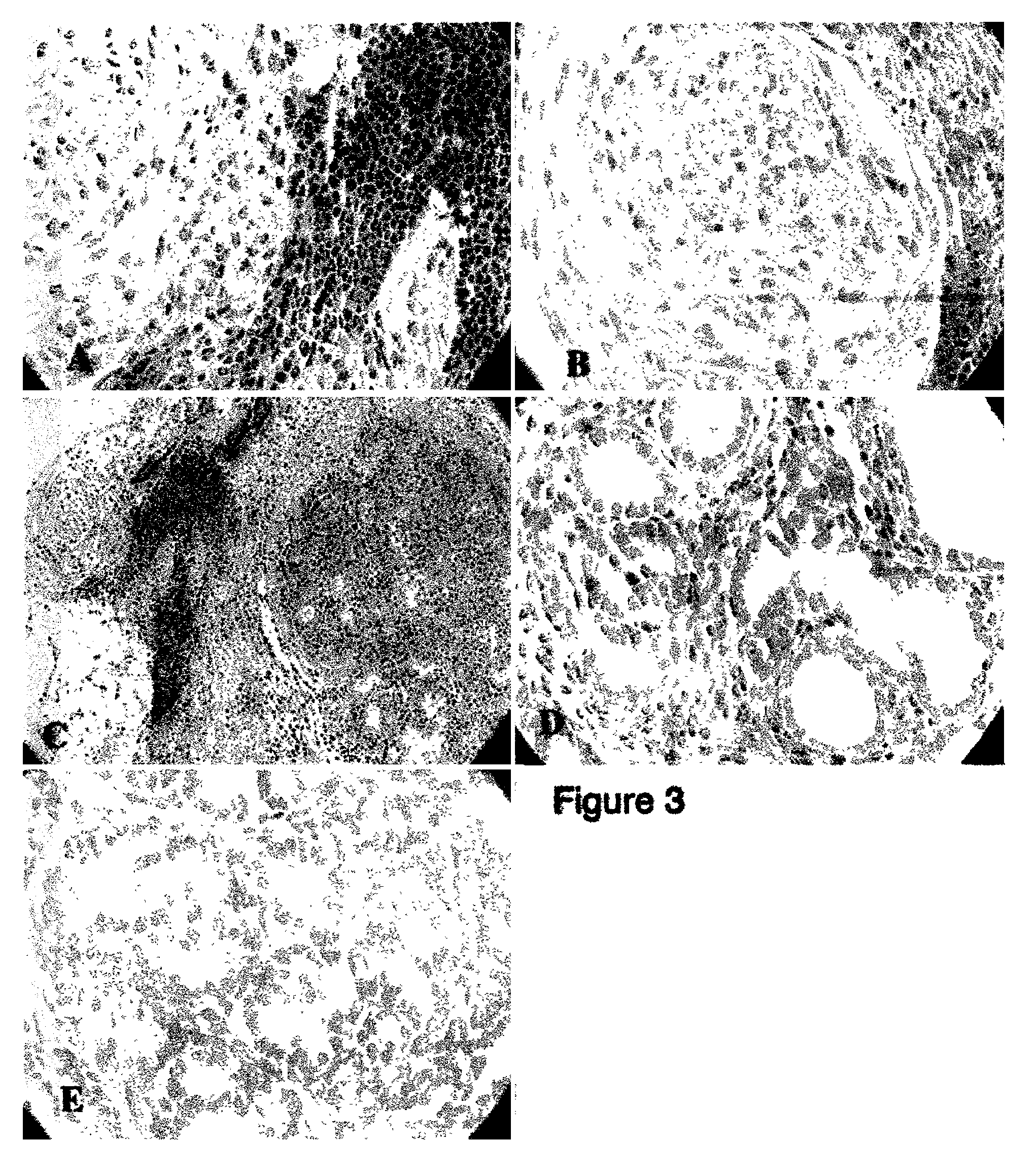Human pancreatic epithelial progenitor cells and methods of isolation and use thereof
- Summary
- Abstract
- Description
- Claims
- Application Information
AI Technical Summary
Benefits of technology
Problems solved by technology
Method used
Image
Examples
example 1
Isolation of Pancreatic Progenitor Cells
[0075]Fetal pancreas (gestational age 14–22 weeks) was mechanically pulled apart by microdissection under a stereo microscope prior to enzymatic dissociation. Enzyme treatment consisted of placing the partly dissociated tissue in 1 ml F12 / DMEM medium containing 5 mg / ml collagenase-dispase, 20 μg / ml soybean trypsin inhibitor and 50 μg / ml DNAase for 15 minutes at 37 degrees Celsius.
[0076]Cell aggregates were layered on top of a 5% (by volume) BSA gradient and washed by centrifugation for 6 minutes at 900 rpm. Pelleted cells which were still in aggregate form were resuspended in growth medium consisting of CMRL 1066 nutrient medium containing the following factors:
[0077]
Insulin10μg / mlTransferrin10μg / mlEpidermal growth factor5ng / mlEthanolamine10−6MPhosphoethanolamine10−6MSelenium2.5 × 10−8MTriiodothyronine10−12MProgesterone10−9MHydrocortisone10−9MForskolin1μMHeregulin10nMAprotinin25μg / mlBovine pituitary extract75μg / mlGentamycin100μg / ml
[0078]Resusp...
example 2
Use of Pancreatic Progenitor Cells in Transplants
[0079]For the purpose of recombinant grafting, the cells were left in the spherical state from the time of original plating or the monolayers were released from the collagen and grown in non-coated flasks where they remained in suspension and re-aggregated into spherical structures.
[0080]For the purpose of grafting, the spheres were placed on top of seminal vesicle mesenchyme from e15 rats, usually 5–8 spheres to a mesenchyme aggregate of 2×105 to 5×105 cells. Each recombinant was placed on agar and incubated overnight at 37 degrees in a 5% CO2 humidified chamber.
[0081]The grafting consisted of placing from 3–6 recombinants under the kidney capsule of an immunodeficient mouse (nude or SCID) and left for 6–8 weeks. The grafts were then harvested and processed for immunohistochemistry.
[0082]The result of pancreatic tissue recombinant graft transplantation was assessed by morphology. Pancreatic progenitor cells have the appearance of bei...
example 3
Determining the Identity of Transplanted Pancreatic Progenitor Graft Cells, Differentiation State of Pancreatic Progenitor Cells, and Their Function
[0083]After the pancreatic spheres have been transplanted under the kidney capsule of mice and allowed to remain at that location for 6–8 weeks, the grafts were harvested and analyzed for identity of pancreatic cells by immunohistochemistry and function. The grafts have been shown to express insulin and glucagon (FIGS. 4, 5, and 7). Furthermore, the tissue graft recombinants have shown the formation of ductal structures (FIG. 6). Therefore, the tissue recombinant grafts yielded functional pancreatic cells that could express insulin and glucagon and form ductal structures.
PUM
| Property | Measurement | Unit |
|---|---|---|
| Level | aaaaa | aaaaa |
Abstract
Description
Claims
Application Information
 Login to View More
Login to View More - R&D
- Intellectual Property
- Life Sciences
- Materials
- Tech Scout
- Unparalleled Data Quality
- Higher Quality Content
- 60% Fewer Hallucinations
Browse by: Latest US Patents, China's latest patents, Technical Efficacy Thesaurus, Application Domain, Technology Topic, Popular Technical Reports.
© 2025 PatSnap. All rights reserved.Legal|Privacy policy|Modern Slavery Act Transparency Statement|Sitemap|About US| Contact US: help@patsnap.com



